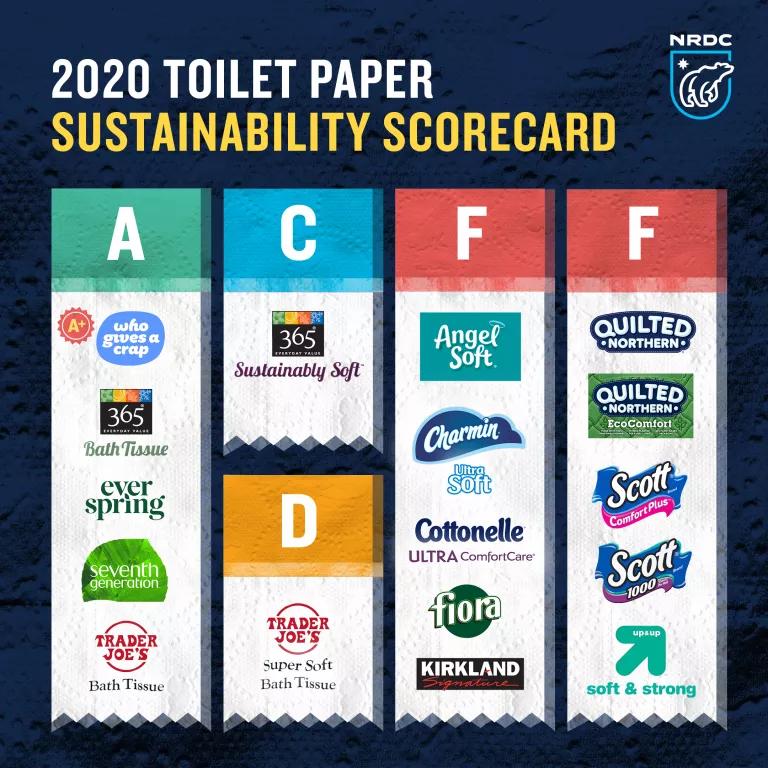P&G, You Can't Outsource Sustainability
P&G's new commitment misses the mark. Until the company gets its own house in order by addressing its role in forest destruction, they will continue to put our only home and our future at risk.

Ben Wiseman for NRDC
The time’s up for half-measures and symbolic gestures when it comes to climate change. Yet once again, Procter & Gamble (P&G) has missed an opportunity to demonstrate true leadership and innovation to address its role in the climate emergency.
In a panel event this morning, P&G’s CEO David Taylor and Chief Sustainability Officer Virginie Helias announced P&G’s new “It’s Our Home” campaign, centered around fostering “nature as a climate solution” in order to achieve “carbon neutrality” by 2030. Unfortunately, there’s nothing neutral about P&G’s decision to avoid responsibility for how its products are made and where they come from. Despite creating a veneer of sustainability, P&G continues to knowingly cause lasting harm to places like the climate-critical Canadian boreal forest. Ultimately, they are a key driver behind one of the most wasteful and egregious supply chains in the U.S. marketplace--the tree-to-toilet pipeline.
P&G is the largest purchaser of boreal pulp in the United States. It uses tree fiber from the boreal forest to make its tissue products--including Charmin, Bounty, and Puffs, which are all made with 100% virgin forest fiber rather than recycled content or sustainable alternative fibers, which have a fraction of the climate impact. The company’s use of boreal forest fiber exacerbates the destruction of one of the most carbon-dense forests on the planet, and one that is vital for Indigenous communities and for threatened species, which earned all of its tissue products F’s in our latest tissue scorecard.

NRDC and our partners like Stand.earth have exposed P&G’s boreal sourcing as a huge climate liability for the company, yet the company has refused to embrace meaningful solutions, such as reducing its reliance on virgin forests for its tissue products; requiring its suppliers adhere to U.N.-recommended protocol for securing consent to operate on Indigenous Peoples’ traditional lands (a step which is not only critical from a human rights perspective, but also fosters much more sustainable land management practices); and not sourcing from critical habitat of the threatened boreal caribou, whose shrinking habitat also happens to be in some of the most carbon-rich parts of the boreal forest.
P&G’s “It’s Our Home” campaign is not leadership, and not much of it is new either. The only real difference between the company’s existing commitment to reduce their emissions from their operations by 50% by 2030 and their new announcement of “carbon neutrality by 2030” is an infusion of money to avoid full responsibility. P&G is now promising to invest in protecting carbon sinks as a way to offset the rest of their operations emissions by 2030, while continuing to use climate-critical boreal forest fiber for its throwaway tissue.
Carbon offsets have long been derided as a way for corporations to avoid taking responsibility for the effects of their own sourcing on the planet. But it’s puzzling that P&G decided that this is the way they can demonstrate leadership, especially when their peers are so far ahead of them.
Many companies already have plans in place to reduce by half or more their emissions from what are called Scope 1 and 2 sources. Scope 1 and 2 emissions are those that the company is directly responsible for in its manufacturing and the emissions from its electricity purchasing. Scope 3 emissions come from the entire cradle-to-grave sourcing, manufacture, and use of a product. They include not only the emissions created from using a product at home (e.g. the energy required to do a load of laundry), but also the product’s upstream emissions, like the carbon impacts of logging. These emissions are often undercounted by corporations and in many cases unregulated too.
Scope 1 and 2 emissions are often the most easily mitigated. While scope 3 emissions pose much greater challenges for corporations to reduce them, they are often the largest source of emissions by far. In fact, P&G’s Scope 3 emissions are at least 98% of its total emissions, according to the company’s own reporting.
P&G’s peers’ commitments reveal P&G as a laggard. For example, Unilever, the maker of Seventh Generation recycled tissue products among many other consumer products, has a commitment to cut their Scope 1 and 2 emissions by 100% and halve the carbon impact of its products across their lifecycle by 2030. Kimberly-Clark just announced their new sustainability goals, which included a commitment to reduce their Scope 3 emissions by 20% by 2030, and explicitly acknowledged their forest sourcing is a climate challenge that they intend to address by setting measurable goals by the end of this year.
By refusing to end sourcing from climate-critical forests or to guarantee suppliers adhere to the principle of free, prior and informed consent enshrined in the UN Declaration on the Rights of Indigenous Peoples, P&G has earned its reputation as an international laggard in sustainability.
P&G spends more money on marketing than any other company in the world, and has a market cap value of $308 billion, greater than the GDP of Finland. They will either be a meaningful player in the transition to a sustainable future or lead us to climate catastrophe. So far, they’ve chosen the latter.
Instead of cloaking itself in fancy press conferences and overblown announcements, P&G needs to get its own house in order by addressing its role in forest destruction. Until then, they will continue to put our only home and our future at risk.




